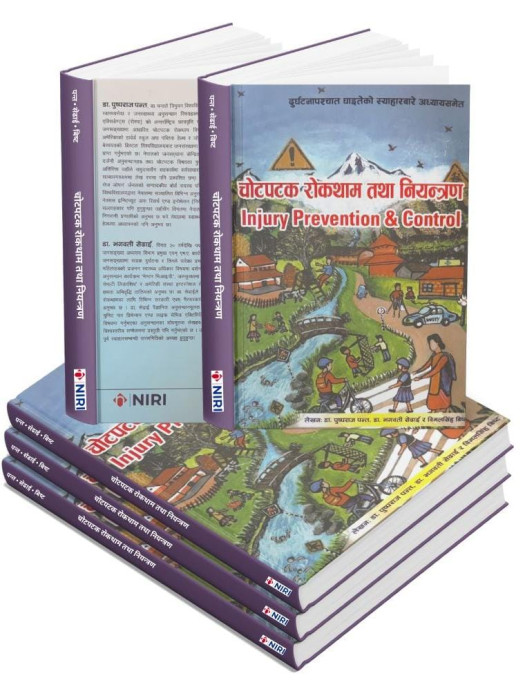Just Published: Injury Prevention & Control (चोटपटक रोकथाम तथा नियन्त्रण)
Imagine holding the very first comprehensive book to injury prevention and control ever published in Nepal, and remarkably, it's written in Nepali. This isn't just another textbook; it's a landmark achievement, meticulously crafted by established academics and seasoned practitioners deeply rooted in the Nepali context. Spanning 12 chapters, this handbook serves as an indispensable resource, laying a solid foundation in the fundamental concepts of injury. It delves into the mechanisms that lead to various types of injuries (poisoning, drowning, burns, falls, road injury etc.) and meticulously outlines the magnitude of the injury problem within Nepal itself, offering a crucial understanding of the local landscape.
What truly sets this book apart is its commitment to evidence-based information when it comes to prevention and control measures. Rather than relying on generic approaches, it provides insights tailored to the specific challenges and opportunities within Nepal. This makes it an invaluable tool for a wide range of learners. For students in high schools, colleges, and undergraduate programs focusing on Health, Health Education, and Nursing, this book will undoubtedly become a cornerstone of their studies, providing them with locally relevant knowledge and practical strategies.
Furthermore, the inclusion of an exclusive chapter dedicated to individual information on prehospital care and first aid for a variety of injuries is a significant asset. This section equips readers with crucial, actionable knowledge that could make a life-altering difference in emergency situations. It empowers individuals with the confidence and skills to respond effectively in the critical moments following an injury.
Beyond its immediate educational value, the handbook also looks towards the future of injury prevention in Nepal. The two dedicated chapters on injury research is specifically designed to benefit academic researchers, as well as planners and decision-makers at various levels. By highlighting the importance of rigorous investigation and data-driven strategies, this section aims to foster a culture of continuous improvement and the development of effective, evidence-based interventions.
Published by the Nexus Institute of Research and Innovation (NIRI), this handbook represents a significant step forward in addressing the critical issue of injury prevention and control in Nepal. It bridges the gap between academic knowledge and practical application, making vital information accessible to a broad audience. For those interested in acquiring this essential resource, further information can be obtained by contacting NIRI directly at office@niri.org. This book is a contribution as a vital tool in creating a safer and healthier future for the nation.








1592308051.png)
